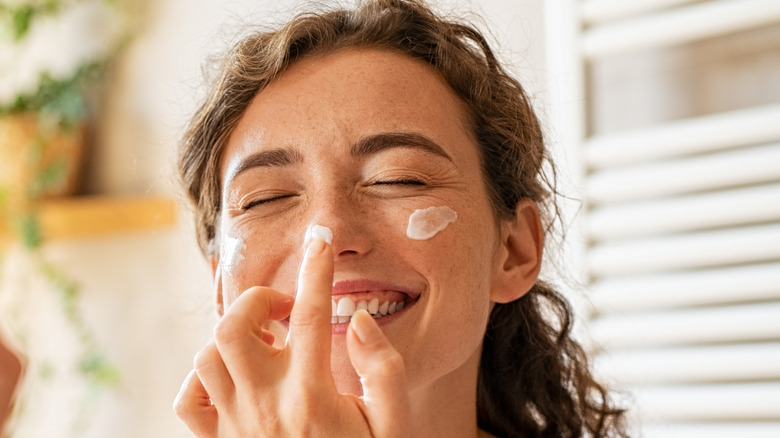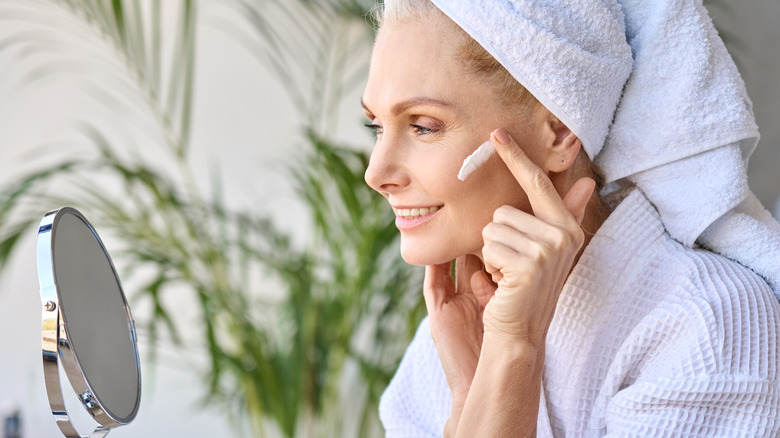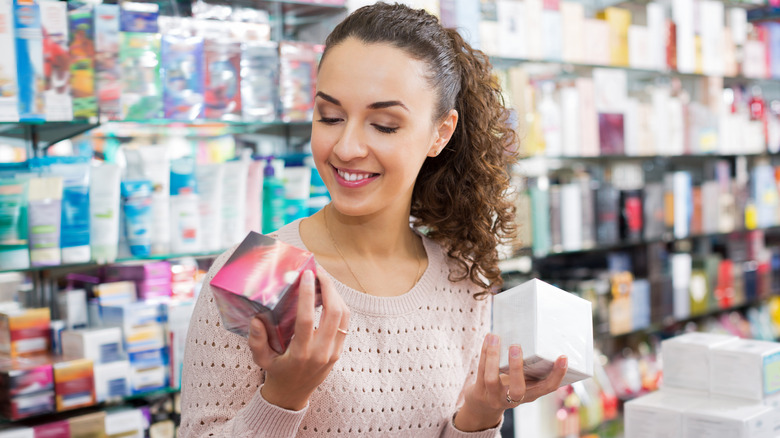Skincare Microdosing: Why Using Less Product Could Mean Better Results Long-Term
Taking care of your skin is important. It's not just for cosmetic reasons, like trying to prevent wrinkles or undereye circles, it's actually important for your health (think wearing sunscreen and getting regular mole checks by your dermatologist to help protect against skin cancer). Healthy skin works as a barrier against bacteria and other environmental pollutants; that's the reason that the microbiome skincare trend is so important. It also has impacts on your emotional health; studies have shown that having acne can negatively affect your mental health, per the American Academy of Dermatology Association.
And it may seem like the more, the better when it comes to skincare. If one product helps your skin stay smooth, why not layer on more to make it even smoother? But instead of maximizing your skincare product usage, think about microdosing with them. When you hear the word microdosing, you may think of medicines or drugs, but you should start thinking about microdosing when it comes to your skincare too.
Microdosing can help prevent skin irritation
Microdosing in the world of skincare means using a smaller than recommended amount of product, particularly for those with strong active ingredients and if it's new to your skincare regimen. It can also mean choosing products with a lower percentage of an active ingredient. Take it slow and microdose, especially if you have sensitive or more mature skin.
You should particularly go for the less-is-more microdosing attitude when you're adding a new product into your skincare routine to make sure that your skin responds well to the new item. And some products need to be microdosed more than others. Dermatologist Mona Gohara told Women's Health Magazine that microdosing is recommended for products that exfoliate your skin. And if you use too much of a powerful product too soon, you're more likely to end up with irritated, red, and stinging skin. Then it will take even more time to get your skin healthy again.
Other products that are good candidates for microdosing include anything that's made to dry out your skin and/or treat acne, like benzoyl peroxide or salicylic acid. In desperation to get rid of a zit or deal with a breakout, it can be tempting to lather on a spot treatment or to combine multiple treatments. But that will almost definitely cause skin irritation, which can then cause more acne.
Stronger doesn't always mean better
It can be tempting to tackle your skincare issue with the strongest product on the market. The stronger, the better, right? But there's a reason there's a range of percentages of active ingredients, like retinols, and there's also a reason that dermatologists recommend starting with the lowest dosage. It's because microdosing helps stop your skin from reacting negatively to too much of a good thing. Compare percentages of active ingredients between products and choose the lower option if you don't know how your skin will react.
Give your skin time to adjust to a new product or a new concentration of an active ingredient, and don't be discouraged if you don't see immediate results with your microdosing. It can take a month or so for beauty products to start working, and potentially even longer if you're using a super low dose. But if you're patient with your new products, you'll see results without having to start over after skin irritation. And bonus! Since one way to microdose is to use less product than recommended on the package to see how your skin reacts, it means that you'll be saving money by not overusing or wasting any of your products.


